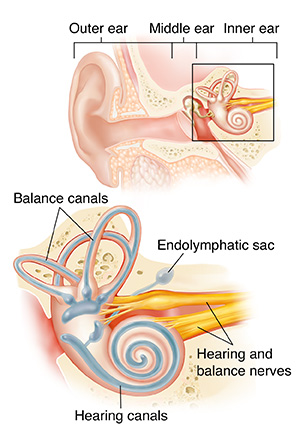Anatomy of the Inner Ear
Anatomy of the Inner Ear
There are two parts of the inner ear. One part (hearing canal) is for hearing. The other part (balance canal) is for balance.
The canals are filled with a fluid called endolymph. The level of this fluid is maintained by a small organ called the endolymphatic sac. In the hearing canal, sound waves cause vibrations in the endolymph. The inner ear detects these sound waves and sends nerve impulses to the brain. The sound we hear is a result of the brain's interpretation of these nerve impulses.
In the balance canals, change in position causes movement of the fluid. This movement is detected in the balance portion of the inner ear, and nerve impulses are sent to the brain.
The endolymphatic sac keeps inner ear fluid at a constant level. The balance canals collect balance information. The hearing canal collects sound information. The hearing and balance nerves carry information to the brain from both parts of the inner ear.
Updated:
March 21, 2017
Reviewed By:
Fraser, Marianne, MSN, RN,Images Reviewed by Staywell medical art team.,Kacker, Ashutosh, MD
